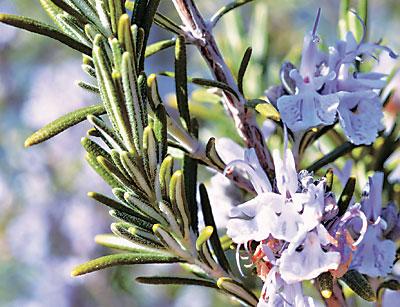Seasons by the Sea: Early Spring’s Green Delights

Other than the lack of rain, this spring has been beautiful. But what has amazed me the most are the hardy little herbs that survived the entire winter and are now going gangbusters in the garden.
In the middle of February I was wandering around the Living Room’s kitchen garden and spied cilantro. Cilantro! Granted it was a bit low to the ground with tough stems but I was able to gather enough leaves to go running and yelling back into the kitchen. “Look! We can make salsa! Pico de gallo! In February!” The garden is now yielding sorrel, chives, two kinds of mint, sage, lemon thyme, rosemary that stayed green, and a few sweet little volunteer Johnny-jump-ups.
According to the Cornell Cooperative Extension of Suffolk County you can now plant asparagus, broccoli, cabbage, carrots, cauliflower, sweet corn, lettuce, onions, peas, radishes, and spinach. As a gardener who is always waiting for the other shoe to drop (late frost, it could happen), I have held off on planting tender greens. As I am also ever fearful of the other hoof to drop (damn deer) I tend to plant flowers, herbs, and bitter greens that Bambi doesn’t go for.
This spring I have been intrigued by sorrel. We don’t seem to eat much of it in America, but in France and Germany it is a prized spring green. If you have some in your garden, now is the time to use it, when it is at its most tender stage of growth. It is, as the science of food expert Harold McGee has called it, “the startlingly sour” leaf of relatives of rhubarb and buckwheat. It pairs beautifully with fish, makes a wonderful soup with potatoes and leeks, and can be shredded and added raw to salads. As it disintegrates immediately and turns a less attractive olive green when cooked, a nifty trick is to purée it with a bit of butter, which can be stirred into the soup before serving. Garnish with snipped chives or bits of chive blossom.
I use chives almost every day, chopped chives in scrambled eggs, in corn muffins, salads, and puréed with olive oil to drizzle over seared halibut on a bed of mashed potatoes. Hubba-hubba! Anytime you want a milder, gentler onion flavor, use chives.
The rosemary that never died all winter has provided flavor for many potato galettes, roast chickens, and butternut squash dishes. Now that the spearmint and peppermint, which also never completely died this winter, are already a few inches tall, I have been using them in both adult beverages and healthy tisanes.
It is also fun to combine spring vegetables from the markets with what may already be growing in your garden. Peas of all kinds (English, snap, and snow) combined with asparagus and ramps can be garnished with sorrel, chives, and chervil. Artichokes have two growing seasons, spring and fall, but the spring artichokes are the best, larger with tighter leaves and usually at better prices.
Fava beans are so prized in Italy that they have spring rituals to celebrate their arrival. Also known as broad beans, horse beans, and pigeon beans, they are a labor-intensive bean to prepare, but worth all the effort. Stage one is to string and shuck the beans from their 5 to 7-inch pods.
Next, blanch the beans so they can be more easily slipped out of their little waxy coating. Then cook a few minutes more, if desired.
They have a sweet, buttery flavor and the texture of baby green peas. Do not buy favas that appear to be straining to break out of their pods, these will be more mature and slightly bitter. To enjoy the Italian way, set out the blanched beans with a mild pecorino, such as Sardo or Toscano, not Romano, some bread, and a light, crisp, white wine such as a Frascati that matches the fava’s slightly tannic nature.
Whether you like to plant and forage, shop for your herbs and vegetables, or just be the one who sits on the patio sipping wine and shucking fresh favas, enjoy these fresh and green early days of spring. Here are some recipes to inspire you.
Click for recipes
